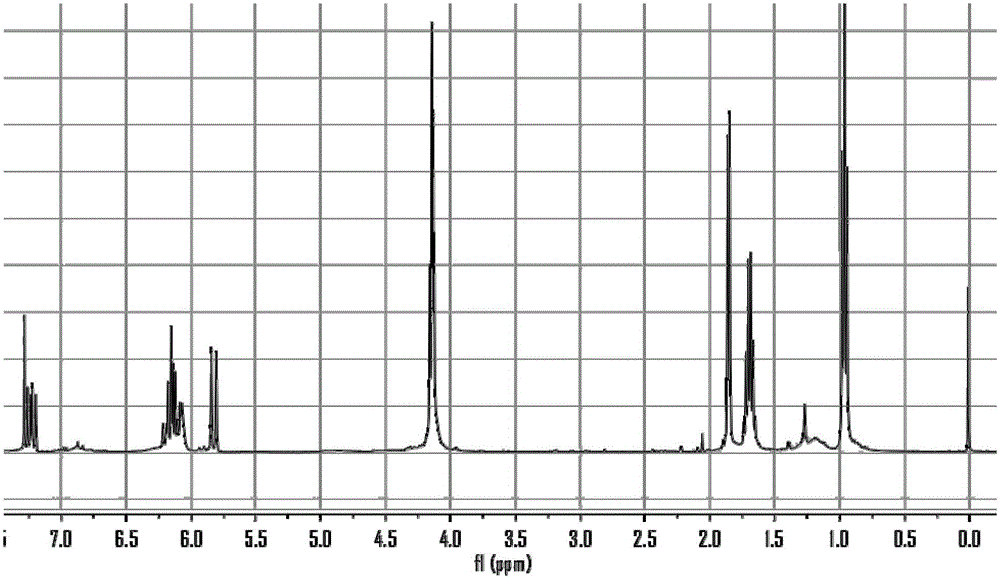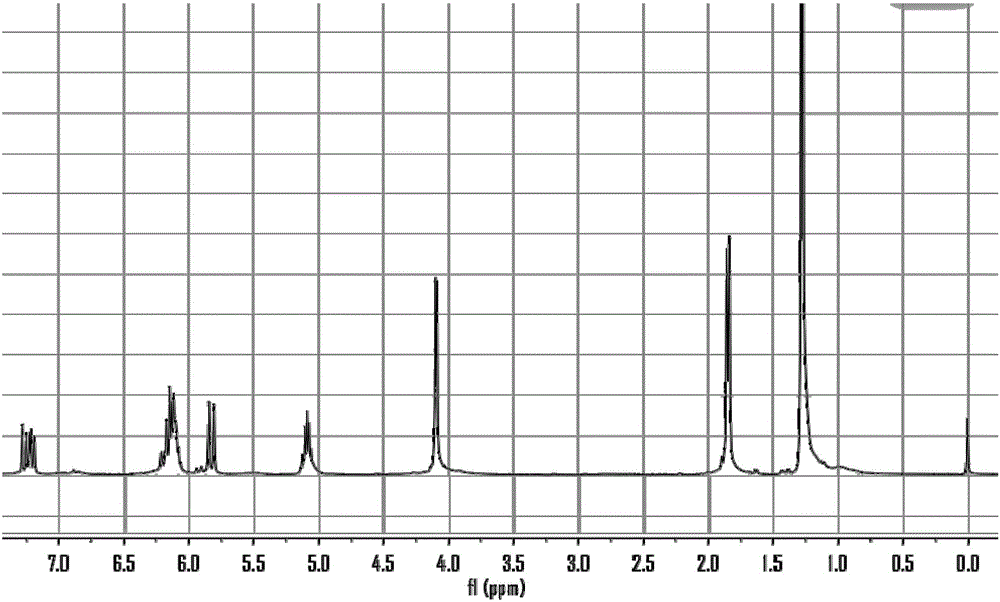Antibacterial preservative sorbic acid amino acid ester derivative and preparation method thereof
A technology for preservatives sorbic acid and amino acid ester, applied in the field of antibacterial preservatives, can solve problems such as weakening of bacteriostatic activity, and achieve the effects of simple and easy synthesis method, good application value and wide source of raw materials
- Summary
- Abstract
- Description
- Claims
- Application Information
AI Technical Summary
Problems solved by technology
Method used
Image
Examples
Embodiment 1
[0035] Embodiment 1, glycine ethyl sorbate shown in formula (Ⅳ) (a 1 ) preparation
[0036]
[0037] Synthesis of glycine ethyl ester hydrochloride: Add 30ml of ethanol to a 100ml three-neck flask, then add 2.6ml of SOCl dropwise 2 During the dropping process, the temperature is controlled at -10°C to 0°C. After the dropwise addition, continue to stir for 1 hour, then add 0.75 g of glycine, and naturally raise the temperature to room temperature for 3 hours. At this time, the solution becomes a white emulsion, and then heated to reflux 4h, until the solid disappears completely. Remove excess ethanol and SOCl under reduced pressure 2 After that, a light yellow viscous liquid was obtained.
[0038] Acyl chloride of sorbic acid: Add 1.12g sorbic acid and 2.18ml thionyl chloride into a 100ml three-necked flask, and continue stirring for 1h until no gas is generated. Excess SOCl was removed under reduced pressure 2 After that, a light yellow viscous liquid was obtained.
...
Embodiment 2
[0040] Embodiment 2, glycine propyl sorbate shown in formula (Ⅴ) (a 2 ) preparation
[0041]
[0042] Synthesis of glycine propyl ester hydrochloride: Add 30ml of n-propanol in a 100ml three-neck flask, then add 2.6ml of SOCl dropwise 2 During the dropping process, the temperature is controlled at -10°C to 0°C. After the dropwise addition, continue to stir for 1 hour, then add 0.75 g of glycine, and naturally raise the temperature to room temperature for 3 hours. At this time, the solution becomes a white emulsion, and then heated to reflux 4h, until the solid disappears completely. Remove excess ethanol and SOCl under reduced pressure 2 After that, a yellow viscous liquid was obtained.
[0043] Synthesis of propyl glycinate sorbate: Add the synthesized propyl glycinate hydrochloride into a 100ml three-neck flask, then add 10ml chloroform and 2ml triethylamine, after cooling in an ice-salt bath, slowly add acid chloride diluted with chloroform dropwise Sorbic acid solut...
Embodiment 3
[0044] Embodiment 3, glycine isopropyl sorbate shown in formula (Ⅵ) (a 3 ) preparation
[0045]
[0046] Synthesis of glycine isopropyl ester hydrochloride: Add 30ml of isopropanol to a 100ml three-neck flask, then add 2.6ml of SOCl dropwise 2 During the dropping process, the temperature is controlled at -10°C to 0°C. After the dropwise addition, continue to stir for 1 hour, then add 0.75 g of glycine, and naturally raise the temperature to room temperature for 3 hours. At this time, the solution becomes a white emulsion, and then heated to reflux 4h, until the solid disappears completely. Remove excess ethanol and SOCl under reduced pressure 2 After that, a yellow viscous liquid was obtained.
[0047] Synthesis of glycine isopropyl sorbate: add the synthesized glycine isopropyl hydrochloride into a 100ml three-necked flask, then add 10ml chloroform and 2ml triethylamine, cool in an ice-salt bath, slowly add dilute with chloroform Acyl chloride sorbic acid solution, the...
PUM
 Login to View More
Login to View More Abstract
Description
Claims
Application Information
 Login to View More
Login to View More - R&D
- Intellectual Property
- Life Sciences
- Materials
- Tech Scout
- Unparalleled Data Quality
- Higher Quality Content
- 60% Fewer Hallucinations
Browse by: Latest US Patents, China's latest patents, Technical Efficacy Thesaurus, Application Domain, Technology Topic, Popular Technical Reports.
© 2025 PatSnap. All rights reserved.Legal|Privacy policy|Modern Slavery Act Transparency Statement|Sitemap|About US| Contact US: help@patsnap.com



